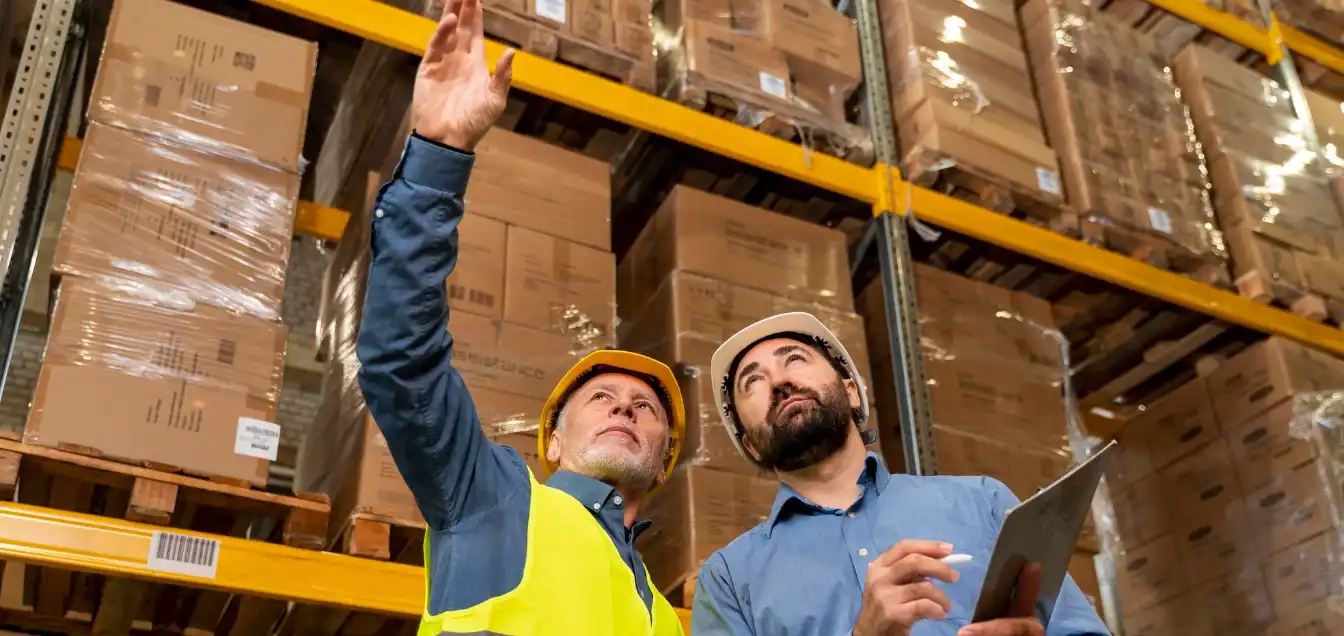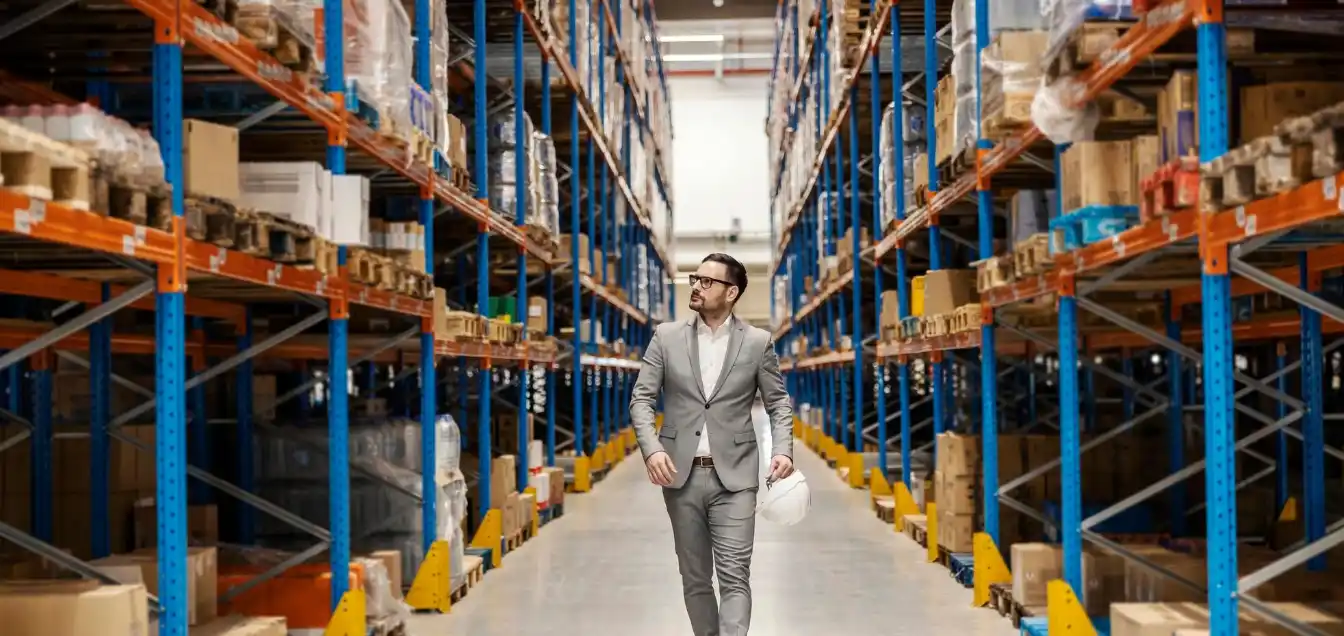In the evolving landscape of logistics and supply chain management, understanding the types of warehouses is essential for businesses aiming to optimize their operations. As we move into 2025, warehouses are not just storage spaces but complex facilities equipped with modern technology to meet the demands of faster shipping, enhanced inventory management, and innovative distribution strategies. This blog explores the various types of warehouses and how they function within supply chains.
Table of Contents
Types of Warehouses in Supply Chain Management

Supply chain management has undergone significant transformations in recent years, with the types of warehouses reflecting these changes. In 2025, the two primary categories of warehouses are public and private units. Each type serves distinct purposes, tailoring their offerings to the specific needs of businesses, including the effective solutions provided by Canada 3PL companies that utilize these warehouse types to enhance logistics and inventory management.
Public Warehousing: Flexibility and Cost-Effectiveness
Public warehouses provide storage for multiple clients, allowing businesses to rent out space as needed. These types of public warehouses offer flexibility and a cost-effective solution for businesses that cannot justify the costs of a dedicated facility. In Canada, for instance, Public Warehousing in Canada has seen growth due to increasing demand for storage solutions. By utilizing public storage, companies can manage costs and efficiently respond to market fluctuations.
Public warehouses can be an excellent choice for seasonal businesses. For example, a company like Loblaws may need additional storage around holidays or sales events. By using a public warehouse, they can scale their storage needs up or down without committing to long-term leases or expenses.
Private Warehousing: Control and Efficiency
In contrast to public warehouses, private warehouses are owned and operated by a single company, allowing for complete operational control. These facilities are built to optimize inventory management and improve efficiency. The Warehouse categories include specialized facilities, like refrigerated warehouses, which cater to temperature-sensitive products.
In 2025, we anticipate a significant rise in the use of private warehouses, especially for companies in industries with consistent demand, such as consumer packaged goods or pharmaceuticals. A case in point is a company like Johnson & Johnson, which manages its own warehouses to ensure strict quality and compliance standards.
Types of Public Warehouses
The types of public warehouses can vary based on services offered. Some focus exclusively on storage, while others provide additional services, such as packing, packaging, and inventory management. For businesses in Canada, using public warehouse services can significantly enhance logistics through partnerships with reliable third-party providers.
Service-Specific Public Warehouses
Some public warehouses specialize in certain services. For instance, a warehouse may focus on handling perishable goods, with temperature-controlled environments and specialized handling processes. Another example might be hazardous materials warehouses that adhere to strict safety protocols.
By customizing their offerings, public warehouses can cater to a broad range of industries. For example, a company like DelGate specializes in public warehousing and has established itself in the Canadian market by offering tailored services to both small businesses and large enterprises.
Case Study: Efficient Public Warehousing
A prime example is the Hudson’s Bay Company, which has utilized types of public warehouses to streamline its logistics operations. By partnering with a public warehousing provider, Hudson’s Bay was able to reduce inventory costs by 30% and improve shipping times across Canada, capitalizing on the flexibility provided by public warehouses.
This case illustrates how utilizing public warehouses can offer significant competitive advantages. By leveraging these types of public warehouses, companies can expand their reach without incurring substantial overhead costs associated with maintaining a private warehouse.
Types of Warehouses and Their Functions

In understanding the types of warehouses and their functions, it is crucial to recognize the roles they play in supporting various business models. Each type of warehouse serves specific logistical needs, facilitating everything from storage to order fulfillment.
Fulfillment Technology Solutions
Modern warehouses are increasingly adopting fulfillment technology solutions to enhance efficiency. Automated systems, robotics, and advanced inventory software transform traditional warehouses into high-tech fulfillment centers capable of handling large volumes of orders rapidly. The integration of technology is reshaping the types of warehouses in supply chain management by enabling quicker responses to consumer demands, including innovative fulfillment services in Canada that cater to the evolving needs of the market.
For example, Amazon’s fulfillment centers utilize advanced sorting and robotic systems that can handle thousands of orders simultaneously, drastically reducing processing times. As we head into 2025, we can expect more warehouses to embrace such technologies to remain competitive.
Third-Party Logistics (3PL)
The rise of 3PL fulfillment in Canada demonstrates the importance of utilizing external partners in logistics. Companies like Shopify and ShipBob offer comprehensive third-party warehouse services, allowing businesses to focus on core operations while leveraging the efficiency of dedicated logistics providers. This trend highlights the growing complexity of managing supply chains, driving demand for reliable warehouse facilities.
By integrating 3PL services, businesses can offer improved delivery times and flexibility. For instance, when a seasonal demand spike occurs, companies using 3PL services can easily upscale their logistics operations without needing to invest heavily in real estate.
Benefits of Using 3PL Services
Utilizing 3PL Warehouse Services in Canada can lead to substantial savings and efficiencies. Businesses can save money on labor and overhead costs associated with maintaining a warehouse, allowing them to focus on core competencies. Furthermore, 3PL providers have a network of warehouses strategically placed to ensure optimal distribution, leading to the fastest shipping in Canada.
Companies like DelGate have expanded their presence in Canada, offering not just storage, but also fulfilling roles in entire supply chains, such as customs clearance and freight forwarding, making them a popular choice among Canadian businesses looking for comprehensive logistics solutions.
Fastest Shipping in Canada: The Role of Warehouses
With customer expectations for faster shipping times, the Warehouse categories need to adapt. Reports indicate that by 2025, e-commerce demands will drive a 20% increase in warehouse automation. Warehouses must evolve to meet this demand for speed, resulting in the proliferation of smart warehousing solutions.
To respond to this, many warehouses are implementing new technologies, such as AI for inventory management and IoT devices that monitor supply chain stages in real time. By adopting these technologies, businesses can significantly improve their delivery speeds and customer satisfaction.
Strategic Warehousing Solutions

For businesses seeking to improve their logistics and reduce costs, Strategic Warehousing Solutions are becoming increasingly vital. By strategically placing types of warehouses, companies can enhance distribution efficiency and reduce shipping times, ultimately leading to greater customer satisfaction.
Consider firms like Walmart, which strategically place their distribution centers in proximity to major urban areas. This positioning ensures that products can be shipped quickly to retail locations, meeting customer demand in a timely fashion.
Conclusion
Understanding the types of warehouses in 2025 is essential for businesses looking to navigate the complex landscape of supply chain management. From public and private warehouses to innovative fulfillment solutions, companies can leverage various strategies to optimize operations and meet consumer demands.
By identifying the right mix of types of warehouses, companies can enhance their efficiency, improve customer service, and maintain a competitive edge in an ever-evolving market landscape. As technology continues to reshape logistics, the future of warehouses is poised for exciting advancements.





